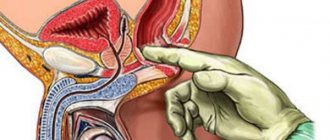Causes of constipation in adults
Constipation is the result of intestinal dysfunction, associated with problems with the evacuation of feces, accompanied by increased gas formation, pain in the abdominal area (abdominal area), nausea, headaches and dizziness. Defecation leads to pain and discomfort in the abdomen and anus.
Constipation can be a consequence of the following problems:
- dehydration of the body as a result of insufficient fluid intake in pure form and with food or against the background of prolonged diarrhea and vomiting;
- an inactive lifestyle, which reduces muscle tone and leads to congestion in the pelvic organs and impaired intestinal motility;
- pathologies of the digestive tract: pancreatitis, gastritis, benign and malignant neoplasms in the intestine, intussusception (intestinal obstruction as a result of the introduction of one part of the intestine into another);
- taking medications that may cause constipation, such as antibiotics;
- poor nutrition with the consumption of large quantities of baked goods and a lack of vegetables and fruits rich in fiber, which is necessary for the smooth functioning of the gastrointestinal tract;
- intolerance to certain foods.
Types of massage for bowel movements
Depending on the technique, there are the following types of abdominal massage for constipation in adults:
- The hardware type is performed by a qualified massage therapist. Involves the use of a vacuum, roller, microcurrent massager.
- Stimulation of the abdominal cavity is performed with light circular movements in a clockwise direction with light pressure. The procedure uses heated tissue.
- The dotted form allows you to speed up intestinal motility. It acts quickly, thanks to its effect on the points responsible for the health of the digestive tract.
- Segmental reflex massage involves influencing the points and nerve endings of the lumbar and thoracic back, which affect the gastrointestinal tract.
- Self-massage, in which massaging the abdominal area to normalize the act of defecation is carried out independently. If you follow the recommendations, you can cope with flatulence and induce the urge to defecate.
All types of abdominal massage for the intestines are safe and have a minimum number of contraindications, therefore this therapeutic method is used for the treatment and prevention of intestinal obstruction in adults and children from birth.
Self-massage of the abdomen according to Ogulov for constipation
The method is gentle and easy to learn. The procedure is done daily before bed.
Before the first procedure, pay attention to the massage rules:
- There should be no severe pain, only slight discomfort;
- exposure lasts more than 3 minutes. Otherwise, ischemia (oxygen starvation in tissues) may occur;
- the movements are soft, but the pressure is not weak;
- If you are going to perform the procedure on a relative, try the steps on yourself first.
Massage technique:
- We are looking for the reflex point of the gallbladder. Mark a third of the distance from the navel to the sternum, set aside the width of 2 fingers to the right. Press vertically until it hurts slightly.
- With light pressure we move to the ribs. This is a projection onto the pancreas. The pressure is applied vertically.
- Right hypochondrium and liver area. From the costal arches we pass the entire hypochondrium 2 times. Apply pressure at an angle of 45 degrees.
- Left hypochondrium. We repeat all the steps as with the right side.
- A point from the corner of the right pelvic region to the navel and 1/3 down. Press the point vertically.
- Perform further actions in a spiral. First, a big turn, we rise to the right ribs. Then we go down from the left. Pressure at an angle of 30 degrees. The following movements are around the navel, retreat 5 cm and press at an angle of 60 degrees.
Massage using the Ogulov method restores blood flow and normalizes organ function naturally.
Improved intestinal motility
To improve bowel function, massage is recommended to be done in the morning on an empty stomach. If the procedure is scheduled in the daytime or evening, it is recommended to refrain from eating 2-3 hours before the massage.
The procedure is performed only if there is no abdominal pain. If discomfort, spasms and other unpleasant symptoms appear during the massage, the procedure should be abandoned until the condition normalizes.
Before visiting a massage therapist or performing manipulations on your own, you should empty your bladder.
Massaging the abdomen is carried out for 10 minutes; to obtain maximum effect, it is recommended to repeat it several times throughout the day.
During pregnancy, massage is indicated for women only in the first half of pregnancy, since in the later stages there is a high danger to the fetus.
Abdominal massage for constipation helps not only to cope with obstruction and evacuate feces, but also to reduce the severity of flatulence, restore metabolism and remove toxic compounds that stimulate bloating and the development of nausea during constipation.
Massaging the abdominal area also helps improve and restore gastrointestinal function by increasing blood flow and directly stimulating the digestive system.
The photo on the left is a normal intestine, on the right is chronic constipation.
In addition, the correct massage technique helps to strengthen the muscle tone of the intestines and prevent the recurrence of constipation. The use of aromatic oils helps relieve intestinal spasms and reduce the severity of premenstrual syndrome.
Massage also normalizes a person’s psycho-emotional state, stimulates increased burning of fat deposits in the abdominal area, removes toxins, which helps to get rid of several kilograms in one course of procedures.
Symptoms of spastic constipation
To know how to do massage for atonic constipation, let's find out how to correctly define it. And this is easy to do, because such fecal retention is characterized by certain symptoms:
- a feeling of fullness in the stomach;
- bloating;
- the appearance of aching pain;
- the occurrence of severe pain during the act of defecation;
- applying great force for emptying, which may cause cracks;
- the appearance of blood in thick stool or on toilet paper.
A massage for spastic constipation will be completely different. Therefore, before doing it, you should familiarize yourself with the symptoms of such a problem:
- abdominal pain appears, similar to colic;
- flatulence occurs;
- the weight of feces is very small, and they themselves look like small peas;
- the act of defecation occurs rarely, but does not cause pain;
- there are no signs of blood on toilet paper or in the stool.
When asked how to massage the abdomen for atonic constipation, experts recommend using a tonic technique and deep pressure with vibration for 0.5-1 minutes. The main thing is to correctly find the points on which you need to press.
- The Er Jian point is located at the base of the phalanx of the index finger and should be massaged by placing your hand on the table.
- The Yongquan point is located in the dimple that appears on the bottom of the foot when the toes are curled and should be massaged while sitting.
- The Qu Chi point is located at the end of the fold that appears when the arm is bent at the elbow, and should be massaged by placing the half-bent arm on the table, palm down.
- Tien Shu points are located six centimeters to the right and left of the navel. You need to massage them simultaneously, lying on your back and bending your knees.
- The Qi Xue points are six centimeters below the navel and 1.5 cm to the left and right sides of it. They need to be massaged simultaneously, also lying on your back with your knees bent.
In turn, acupressure for spastic constipation is performed using a soothing technique, when the skin at certain points only needs to be lightly stroked clockwise for a couple of minutes.
- Ben Shen points are located 1 cm above the scalp directly opposite the outer edges of the left and right eyes, and they should be massaged simultaneously while sitting on a chair with a flat back.
- The Yang Xi point is located on the wrist. It can be found between the tendons when the hand is extended, and you need to massage it by placing your hand on the table, palm down.
- The Yang Ling Quan points are located on the lower leg on the outside of the left and right knee next to the depression, and they should be massaged simultaneously while sitting.
- Er-men points are located next to the lobe of the right and left ear in the area of the joints of the lower jaw, and they need to be massaged simultaneously from a sitting position.
Abdominal massage in an adult with atonic constipation is carried out in three stages, each of which is done slowly and technically for 3-4 minutes.
- First, you should stroke the patient's stomach with light hand movements, without applying any pressure. It should be stroked in a circle from right to left along the entire abdominal cavity from the ribs to the pubis.
- We continue to stroke the stomach, but now we do it a little stronger and deeper, but so that the patient does not experience discomfort. You should start the movement from the iliac region, which is located under the chest just below the stomach, and then go in a circle, applying slight pressure.
- At the final stage, the belly should not be stroked, but pinched, actively rubbed and vibrated. A couple of minutes are allotted for each of these actions. And naturally, vibration, pinching and rubbing are also carried out in a circle from right to left over the entire surface of the abdominal cavity.
But massage for spastic constipation is more aimed not at treating the patient, but at relaxing him. Therefore, although this procedure is similar to massaging for atonic fecal retention, it still has certain differences. This procedure should also begin with light ironing clockwise, which lasts several minutes.
Then you should stroke the belly a little deeper and stronger. At the third stage, vibration and rubbing are carried out. However, all this should be done not as intensely as with a massage to eliminate atonic constipation, but more gently and carefully. And after the procedure, the patient should not immediately go to the toilet, but it is better for him to lie down for about 20 minutes before going to relieve himself.
Indications and restrictions
Massage is necessary to normalize stool if the following indications exist:
- Intestinal spasms. Impact on the abdominal area helps to cope with pain and restore bowel movements.
- Decreased tone of the large intestine. Massage helps restore smooth muscle tone.
Contraindications for massage:
- severe pain in the abdominal cavity and anus;
- blockage of the intestine by malignant tumors;
- tuberculosis, syphilis;
- mental disorders in which massage can provoke an attack of the disease;
- thrombosis;
- cholelithiasis, urolithiasis;
- alcohol intoxication;
- pathologies of the digestive tract during the acute period;
- increased body temperature to critical levels, fever, colds.
Massage is done with extreme caution during the treatment and prevention of constipation in newborns, pregnant women and the elderly.
Abdominal massage for constipation
Abdominal massage for constipation helps restore intestinal motility (efficiency) for both adults and children. Classic massage techniques: stroking, rubbing, pressure, kneading, vibration mechanically affect the abdominal area, intestines and colon.
Abdominal massage for constipation
Abdominal massage for constipation can be:
- segmental-reflex to influence internal organs;
- point for relaxation and stimulation of biologically active zones;
- hardware, using special devices;
- therapeutic, carried out independently (self-massage).
Massage techniques
You can learn more about the technique of massaging the abdomen for constipation by watching a thematic video.
Exciting
If constipation in an adult is associated with decreased colon tone and muscle weakness in the abdominal area, an stimulating massage is recommended to enhance intestinal motility. In this case, a segmental-reflex type of massage is performed, which involves influencing the abdomen and lumbar back.
Massaging the abdominal area is carried out in the following sequence:
- Stroking movements in a clockwise direction, which gradually spread to the entire abdominal area. The duration of the manipulations is 2-3 minutes.
- Deep pressing movements from the lower abdomen on the right side up, above the umbilical cavity and down to the lower abdominal region on the left side. You need to massage your stomach for 3 minutes.
- Rubbing with fingers and brush with increasing intensity. Duration 2-3 minutes.
The simplest massage for occasional problems with bowel movements
If the patient has never suffered from constipation and for the first time has problems with going to the toilet in a big way, then the simplest abdominal massage for constipation can help him. You just need to wrap a cloth soaked in cool water around your right hand, and then move it over your stomach in a clockwise direction for several minutes.
Now we know how to massage for constipation, so we can get rid of problems with bowel movements at any time. But it will be much more effective to combine it with a simple set of exercises, which will cause the urge to go to the toilet, and will also prevent constipation altogether in the future. We repeat each exercise for 1-2 minutes.
- We lie on our backs with our knees bent, and then begin to alternately raise our right and left legs to our stomach.
- We lie on our backs, raise our legs and bend them at the knees, and then turn our legs right and left, trying to touch our knees to the floor.
- We lie on our backs, raise our legs and bend them at the knees, and then alternately raise our knees to the right shoulder, then to the left.
- We get on all fours and place our arms straight in front of us, tense our abdominal muscles, and then sit down so that our chest touches the floor, sometimes so that it touches our knees.
- We stand behind the chair and lean on its back with our left hand, while with our right hand we touch the back of our head. We tense our abdominal muscles, raise our left leg, bending it at the knee, and try to reach this knee with the elbow of our right hand. Then we straighten up and switch arms and legs, raising our right leg and trying to reach it with our left hand.
But that's not all. To avoid constipation, it is recommended not to forget about moderate physical activity such as daily walks in the fresh air, swimming, running or cycling. It is also recommended to eat less fast food, and focus on proper nutrition and quit smoking and alcohol.
Self-massage to normalize bowel function at home
For urgent help with problems with bowel movements, you can massage yourself. During the procedure, the following recommendations should be followed:
- Wash your hands with soap before the procedure;
- expose your stomach and take a horizontal position;
- rub your palms and apply massage cream or oil to the treated area;
- start self-massage by preparing the abdominal muscles with light stroking movements in a clockwise direction;
- then move on to techniques such as pressing and patting, gradually increasing the intensity of movements from the bottom up to the umbilical cavity;
- at the final stage, stroke your stomach to relax.
The duration of self-massage is usually from 10 to 15 minutes. You can get acquainted with different massage techniques and original methods in the section: https://itmassage.ru/avtorskiy.
Rules of procedure
Regardless of the type of fecal retention, you should follow the rules of massage for constipation in an adult.
- Before the procedure, you should calm down, retire and fully concentrate on the massage.
- It is best to perform massage movements in the morning or between meals, ideally this should be done half an hour after breakfast or an hour and a half after lunch.
- Before the procedure, you need to completely empty your bladder.
- Before the massage, you need to wash your hands and warm them slightly, since you should not massage your stomach with cold hands.
- The procedure should only be performed in a lying position.
- You need to try to relax all the muscles as much as possible and only then begin the procedure.
- The duration of the massage should be about 10-15 minutes.
- After the massage, it is advisable to drink a glass of salted water and immediately go to the toilet.
Acupressure
Massage for intestinal obstruction in pregnant women
Intestinal obstruction is a common problem faced by women during gestation (pregnancy). Most often, constipation is associated with changes in hormonal levels and decreased tone of the abdominal muscles. In the later stages, problems with defecation may appear when the rectum is compressed by the uterus, which complicates the process of evacuation of feces from the intestines.
Massage during pregnancy is carried out only by a specialist in the absence of contraindications. As a rule, to cleanse the intestines, pressure is applied to points on the outside of the elbow joint, the back of the shin, or the back of the hand.
Working out points in the abdominal area, pressure and other impacts on the abdomen during pregnancy can lead to serious injuries, including miscarriage.
Contraindications
Before we begin to study how to properly massage for constipation, it is worth understanding that it cannot always be done. Like any procedure, it has its contraindications, in which case it is better to replace massaging with some other way of getting rid of problems with going to the toilet in a big way. Such restrictions include:
- cancer diseases;
- severe abdominal pain;
- fever and colds;
- pregnancy, especially in the last stages;
- drug or alcohol intoxication;
- blood clots in blood vessels;
- diseases such as hernia, cholelithiasis and hypertension;
- recovery process after surgery on the gastrointestinal tract.
Preventing constipation
To prevent intestinal obstruction (difficulty in passing stool), it is recommended to eat properly and lead an active lifestyle.
Nutrition and fluid intake
One of the causes of constipation is insufficient fluid intake. To prevent obstruction, you need to drink 1.5-2 liters of clean water, juices, fruit drinks, and natural compotes daily. You should not drink carbonated and alcoholic drinks, which irritate the intestinal walls and lead to impaired motility. Also, the use of alcohol-containing products disrupts the process of fluid absorption, which leads to diarrhea, which is replaced by constipation.
For preventive purposes, you should eat right: portions should be small, and the number of meals should be from 4 to 6 times a day, the last one no later than 2 hours before bedtime. To stimulate intestinal motility, it is recommended to drink a glass of kefir before bed and eat some prunes or dried apricots.
The diet should be rich in fiber, which is necessary for the normal functioning of the digestive tract. It is found in nuts, vegetables, fruits, legumes, bran and dairy products. Beetroot has a good laxative effect and should be included in your weekly diet.
Physical activity
A sedentary lifestyle reduces the tone of the intestines and abdominal muscles, which leads to problems with bowel movements. To prevent them, it is recommended to avoid the elevator and walk a lot during the day. Walking in the fresh air will be useful.
To prevent constipation, you should perform exercises to strengthen the abdominal muscles (“Vacuum”, “Bicycle”).
General recommendations
To have regular bowel movements, it is recommended to develop a routine. To do this, you need to empty your bowels every day 15-30 minutes after breakfast. It is also important not to suppress the urge to defecate at other times of the day.
After waking up, before breakfast you should drink 1 glass of water with 1 teaspoon of honey and a small amount of lemon juice. This remedy helps to start the digestive tract and serves as an excellent prevention of constipation.
Constipation is a consequence of poor diet, lack of fluids, and a sedentary lifestyle. To combat obstruction, therapy must be comprehensive and include following a diet, taking medications to soften stool, and massage to strengthen the abdominal muscles and normalize intestinal motility.
Features of massage for constipation for infants
For infants, unlike adults, abdominal massage is indicated as a good preventative against constipation. It strengthens the abdominal and intestinal muscles, and in case of colic, it alleviates the baby's suffering.
When performing a massage, you must strictly adhere to medical recommendations:
- it should be done an hour before feeding or two hours after;
- Perform all manipulations gently, without sudden movements;
- do not press hard, avoiding injury to internal organs;
- During the procedure, talk to the baby, smile, or sing a song. The goal is to distract his attention;
- start and end the session by stroking the baby’s tummy;
- each exercise is performed two to five times;
- If a newborn baby has constipation, he should be massaged no more than once a day.











